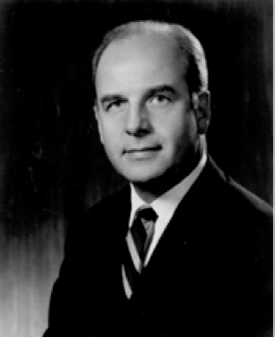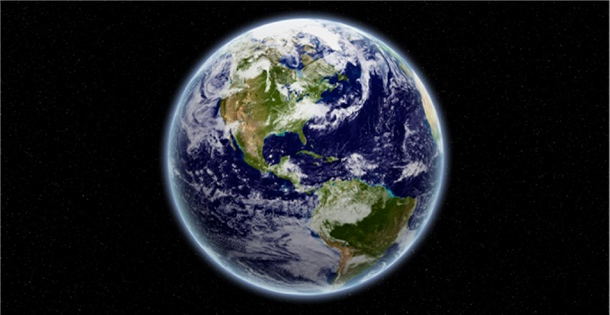This series by American studies professor Ben Railton explores the connections between America’s past and present.
This past weekend featured the 48th annual Earth Day commemorations and celebrations. In our 2018 world of climate change crises and divisive political debates, Earth Day might seem to be an outdated or irrelevant holiday, a quaint relic of an era when the counter-culture ideals of the 1960s produced idealistic narratives of “peace and love” through which to view such issues and occasions.
There’s no doubt that Earth Day’s 1970 origins were specific to that moment, and much has changed in the nearly five decades since. But why Earth Day began and how it developed into that first 1970 celebration offers valuable insights on how it was different from today’s social and political movements.
Earth Day was the brainchild of Wisconsin Senator Gaylord Nelson (1916-2005), a lifelong conservationist who had gradually become more dedicated to environmental concerns. In 1963, his first year as a senator (after two terms as Wisconsin governor), Nelson helped convince President John F. Kennedy to embark on a speaking tour focused on conservation issues; such efforts led no less a Wisconsin legend than Vince Lombardi to call Nelson “the nation’s #1 conservationist” at a 1968 reelection campaign event. But it was the January 1969 Santa Barbara oil blowout, one of the worst man-made environmental disasters in American history, that energized Nelson to wed his conservationism to more direct environmental activism.

Nelson realized that widespread awareness and knowledge were vital prerequisites for any collective and sustained environmental activism. He identified young Americans — specifically college students — as a crucial cohort for that kind of consciousness raising. To that end, Nelson imagined and publicly presented Earth Day as a “national teach-in on the environment,” and recruited a 25 year-old environmental activist and graduate student at Harvard’s Kennedy School of Government, Denis Hayes, as Earth Day’s national coordinator. Hayes and his team chose April 22nd as the date for the initial Earth Day celebrations precisely because it fell between Spring Break and the end of college semesters, and worked closely with more than 2000 colleges and universities to maximize student participation in the event.
The initial Earth Day planning relied on a bipartisan political vision and effort. Early in the process Nelson recruited Pete McCloskey, a young Republican congressman from California with an interest in conservation, as co-chair of the Earth Day planning committee. Together Nelson and McCloskey drummed up support from fellow elected and party officials across the political spectrum, helping connect with local constituencies such as community organizations and public schools (more than ten thousand primary and secondary schools took part in the 1970 celebrations). Compared to more overtly political student-led activism such as the era’s anti-war movement, Earth Day was able to remain largely non-partisan and engage communities such as the nation’s public schools far more fully as a result.
These distinct but complementary efforts produced unprecedented success. They did so on the day itself, with more than 20 million Americans taking part in Earth Day teach-ins, celebrations, and protests. But they also just as importantly extended beyond April 22nd, with a range of effects including profoundly practical and political ones: by the end of 1970 the Environmental Protection Agency had been created and Congress had passed the Clean Air Act; over the next few years the Clean Water Act and Endangered Species Act would follow. These legislative actions might seem less grass-roots and more bureaucratic than the student and community organizing that produced the massive turnout for the first Earth Day celebrations. But when we highlight Nelson and McCloskey’s bipartisan political coalition-building alongside the grass-roots organizing of Hayes and his team, it becomes clear how fully the holiday developed out of precisely a combination of such distinct yet complementary efforts.
Combining forces to educate and mobilize in service of shared concerns might seem like a straightforward enough objective for any social movement. But in practice it’s far from simple to bring together students and politicians, educational institutions and grass-roots activists, national leaders and local communities. 2018 is not 1970, and perhaps such collective efforts are quite simply no longer possible in this era. Yet history can offer models for the present, and the history of the first Earth Day illustrates both the strategies for and the possibilities of building a truly communal coalition to raise national awareness about the crucial issues we still face.
Become a Saturday Evening Post member and enjoy unlimited access. Subscribe now




Comments
Thanks very much for those thoughtful comments, Bob. Definitely models in our current moment for such communal activisms, and no more important cause than environmental ones.
Ben
This is an excellent, timely article. It goes well with Post’s new article on how plastic pollution is ruining everything. The links here are interesting to read, and helps one to understand not only Earth Day’s origins, but the other important Environmental Acts that followed during the Nixon Administration.
Continuing these efforts (more crucial than ever) has been far more challenging than in 1970 for a long time time now. As I said in my plastic pollution comments, it will require individuals and corporations internationally being on the same page for the common goal of what’s good for the environment.
In 1970 there was division in this country (mainly over Vietnam) but there was still a collective cohesiveness in wanting to do what was best for the COMMON GOOD. Today most people are tuned only into their own tech-device driven worlds. Technology, social media etc., can still be used to try to break on through to the other side of life; the real world outside of meaningless selfies and texts.
Getting people past the infantile stage of today’s tech devices is going to be very difficult, when the tech addiction itself is based on the constant disposal and “upgrade” replacement of these same devices that are ruining the planet in the first place.
It’s greed, selfishness and irresponsibility on the part of the consumer and the tech giants. It’s the consumer though, that chooses to stand outside the Apple store lines 24/7 for days to be one of the first to ‘get the latest iPhone of the moment’. Steve Jobs or Tim Cook aren’t forcing people to do anything.
I mentioned in the plastic pollution comments about the disposability factor of nearly everything, how very little is repaired anymore—just disposed of. I say we never give up though. The planet is too important. Whatever collective consciousness there is, needs to be supported so hopefully it will spread and grow, despite the daunting task it is and will continue to be.
The Me Too movement is a good example of getting a lot of awareness and accomplishment done in a short amount of time when there’s laser focus on the goal. It’s a good blue print for the environment also. Let’s get to work.